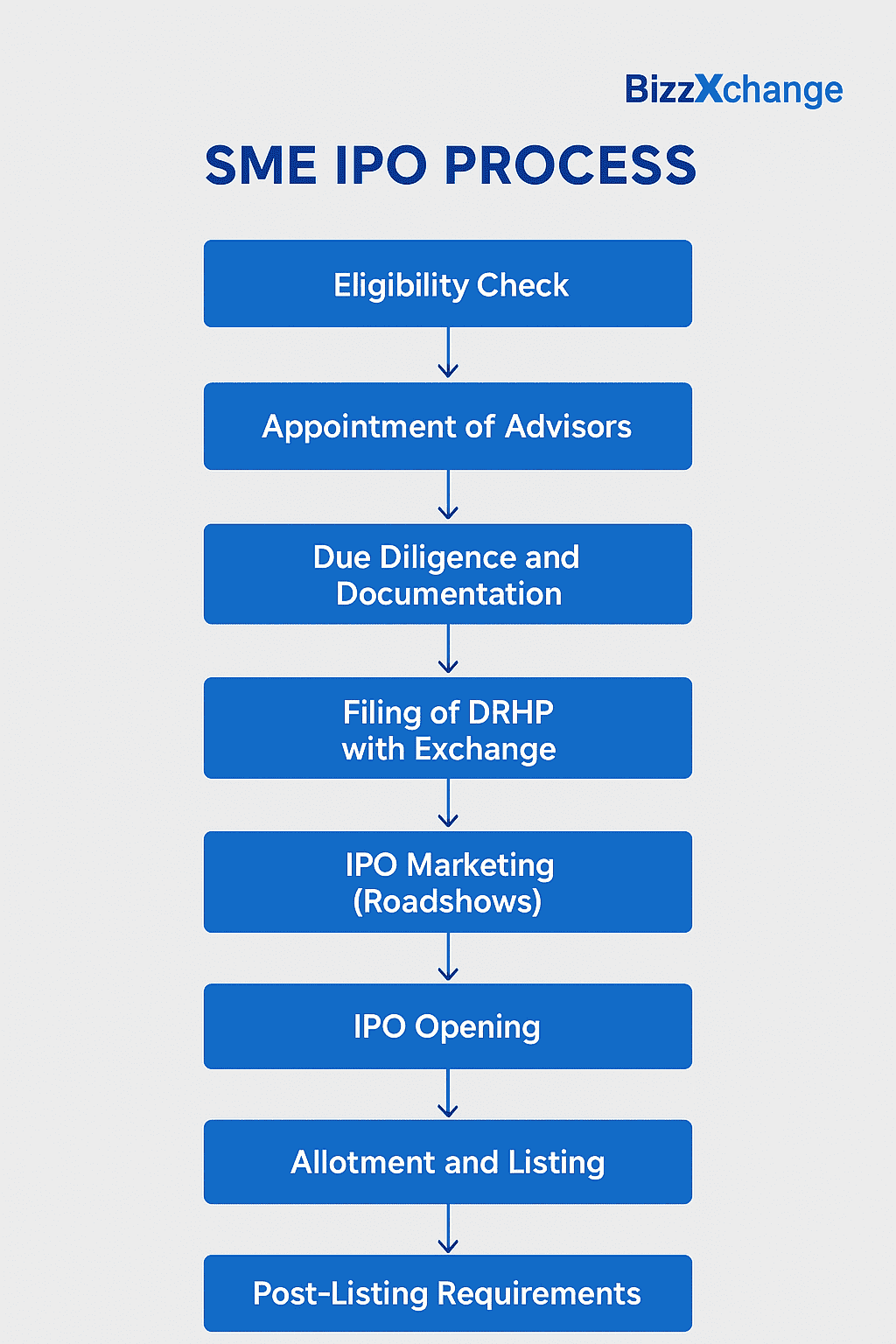22nd Oct, 2025| 5 Min read.

SME IPO issue process
SME IPO understanding
The SME IPO process (Small and Medium Enterprise
Initial Public Offering) is similar to a mainboard IPO but is simplified and
designed for smaller companies that want to raise capital and get listed
on a SME platform of stock exchanges — like BSE SME or NSE
Emerge.
Here’s a clear step-by-step explanation 👇
1. Eligibility Check
Before applying, the SME must meet some basic conditions:
Before applying, a company must ensure it fulfills these
basic conditions:
|
|
|
|
Type of Company |
:Public Limited Company (Private Limited must convert
first) |
|
Post-Issue Paid-up Capital |
:Minimum ₹1 crore and up to ₹25 crore |
|
Track Record / Profitability |
:Positive net worth and profitability in at least 2 of the
last 3 financial years (may vary slightly as per exchange) |
|
Net Tangible Assets |
:Minimum ₹1.5 crore as per latest audited balance sheet |
|
Net Worth |
:Minimum ₹1 crore |
|
Number of Shareholders (Post-Issue) |
:Minimum 50 (to ensure liquidity) |
|
Promoter Holding |
:Should be in demat form and held for at least 3 years
(pre-issue) |
|
Dematerialisation |
:Entire shareholding must be in demat form |
👉 SME IPOs are listed on NSE
Emerge or BSE SME — not on the main board initially.
2. Appointment of Advisors
The company appoints key professionals:
- Merchant
Banker (Lead Manager) – to manage the IPO
- Legal
Advisor – to handle legal documentation
- Registrar
to Issue – to handle applications and allotments
- Auditor
and Company Secretary – for compliance and financial certifications
3. Due Diligence and Documentation
The merchant banker conducts a due diligence check on
the company’s:
- Financials
- Legal
cases
- Promoter
background
- Business
model and risks
Then prepares documents like:
- Draft
Prospectus (DRHP)
- Audited
Financials
- Legal
Reports
4. Filing of DRHP with Exchange
The Draft Red Herring Prospectus (DRHP) is submitted
to the BSE SME or NSE Emerge and SEBI for review.
- Exchanges
check compliance and may ask for clarifications.
- After
approval, the company files the final prospectus.
5. IPO Marketing (Roadshows)
The company and merchant banker conduct investor meetings
and presentations to attract investors — known as roadshows.
6. IPO Opening
The issue opens for public subscription (usually 3–5 days).
Investors (mainly HNI, retail, and institutional) can apply through ASBA
in their banks.
7. Allotment and
Listing
- After
closure, the Registrar finalizes the allotment.
- Shares
are credited to investor demat accounts.
- The
company gets listed on the SME platform (NSE Emerge or BSE
SME).
8. Post-Listing Requirements
After listing, the company must follow SME-specific
compliance, such as:
- Quarterly
financial results
- Annual
reports
- Minimum
public shareholding norms
After 2–3 years of good performance, the company can migrate
to the Main Board (BSE/NSE).